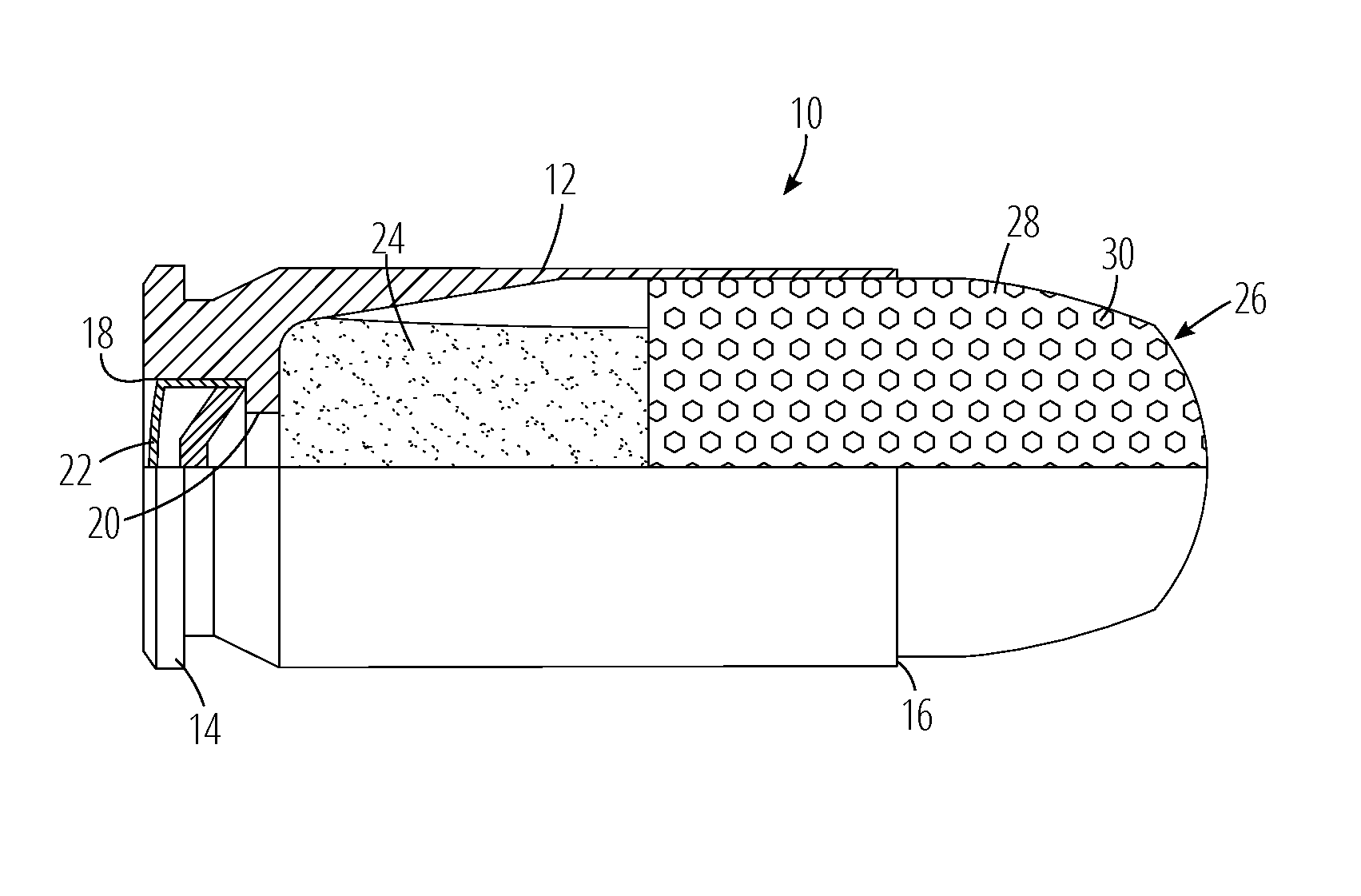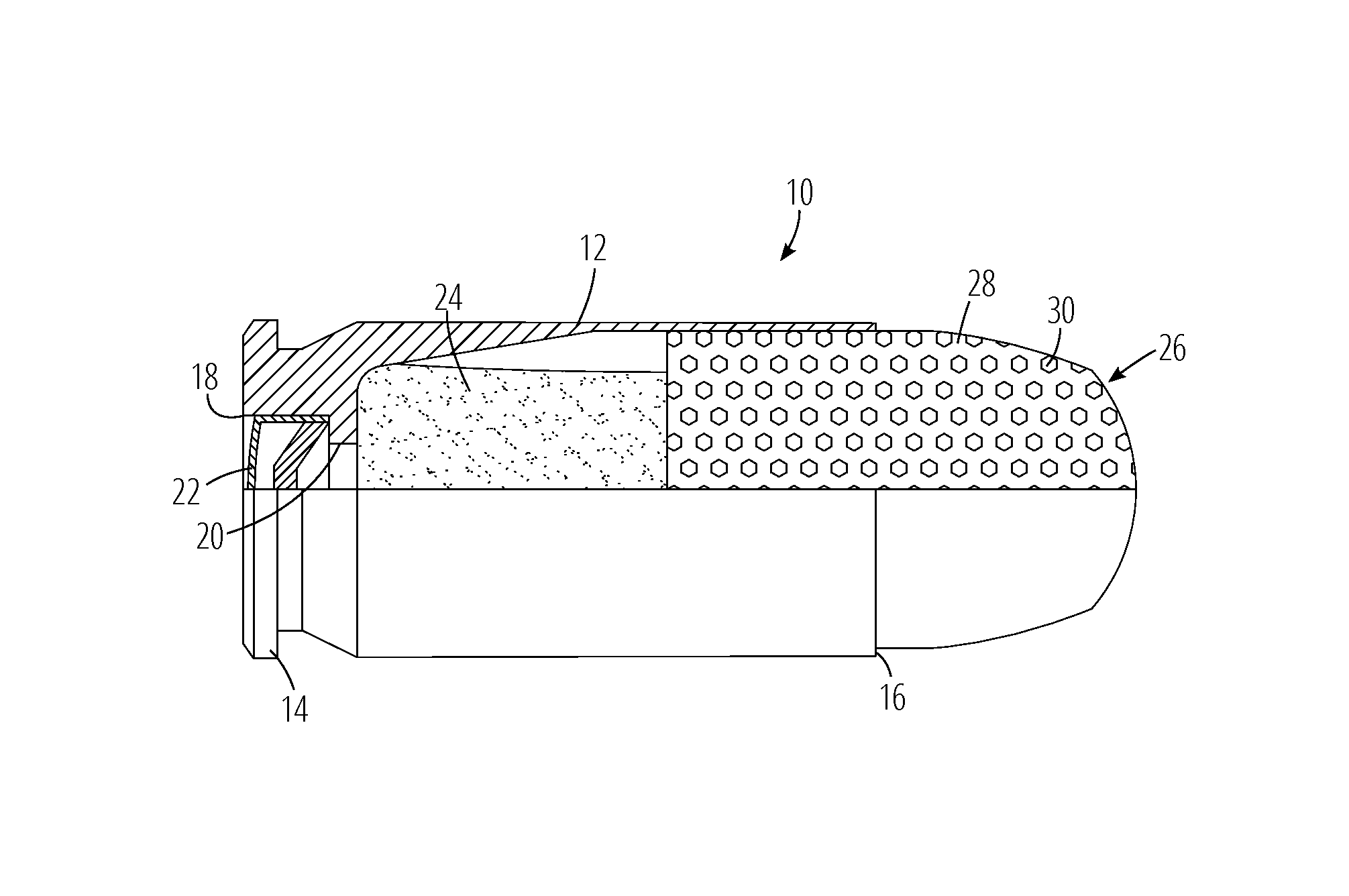Composite projectile and cartridge with composite projectile
a composite projectile and composite technology, applied in the field of projectiles and small arms ammunition, can solve the problems of increasing cost, increasing indoor and outdoor pollution, and affecting the penetration of target targets, and achieving the effects of reducing the number of target penetration, and improving the penetration rate of target targets
- Summary
- Abstract
- Description
- Claims
- Application Information
AI Technical Summary
Benefits of technology
Problems solved by technology
Method used
Image
Examples
example 1
[0021]Projectiles 26 have nominal dimensions conforming to the .45 ACP standard were produced using varying amounts of the toughened epoxy resin described above as the matrix 28 and iron powder (US Standard Mesh size 108) as the filler 30, using the following process. First, the epoxy resin was heated to an appropriate temperature, about 49° C. (120° F.) to reduce its viscosity and permit mixing and distribution of the filler 30. The proper temperature is dependent on particle size. The finer the powder, the lower the viscosity needs to be for proper mixing. Next, the filler 30 was mixed into the resin. After mixing, a conventional hardener (an amine) was added to the resin / filler mixture, at a ratio of 10 parts resin to 1 part hardener. As used herein, the term “hardener” refers to any type of curative agent for the resin. The mixture was then poured into a prepared projectile mold. The resin / filler / hardener mixture was cured to produce an epoxy polymer, and the projectile 26 was r...
example 2
[0024]The projectiles 26 described above can be incorporated into cartridges 10 having powder loads much greater than conventionally used. In combination with a lower-mass projectile, this generates needed muzzle velocity and energy to have lethality (i.e. temporary and permanent wounding characteristics) similar to a conventional lead projectile, when used as offensive or defensive ammunition.
[0025]For example, projectiles 26 described above in .45 ACP caliber, having a weight of about 5.8 g (90 grains), were loaded into cartridges 10 with a powder load sufficient to generate a muzzle velocity of about 701 m / s (2300 ft / s) to 732 m / s (2400 ft / s) when fired from a 12.7 cm (5 in.) long barrel.
[0026]The cartridges 10 were found to exhibit unexpected performance characteristics. The projectiles 26 had excellent structural integrity and did not fail or break up in flight even at the extremely high muzzle velocities. This is believed to be a result of a synergistic interaction between the...
PUM
| Property | Measurement | Unit |
|---|---|---|
| weight percent | aaaaa | aaaaa |
| weight percent | aaaaa | aaaaa |
| temperature | aaaaa | aaaaa |
Abstract
Description
Claims
Application Information
 Login to View More
Login to View More - R&D
- Intellectual Property
- Life Sciences
- Materials
- Tech Scout
- Unparalleled Data Quality
- Higher Quality Content
- 60% Fewer Hallucinations
Browse by: Latest US Patents, China's latest patents, Technical Efficacy Thesaurus, Application Domain, Technology Topic, Popular Technical Reports.
© 2025 PatSnap. All rights reserved.Legal|Privacy policy|Modern Slavery Act Transparency Statement|Sitemap|About US| Contact US: help@patsnap.com


